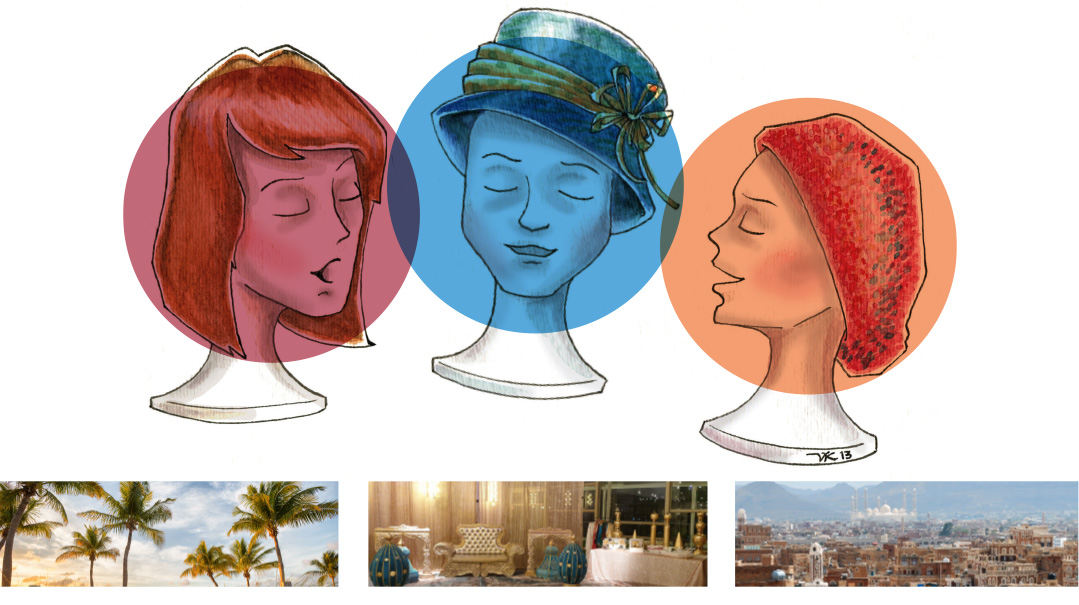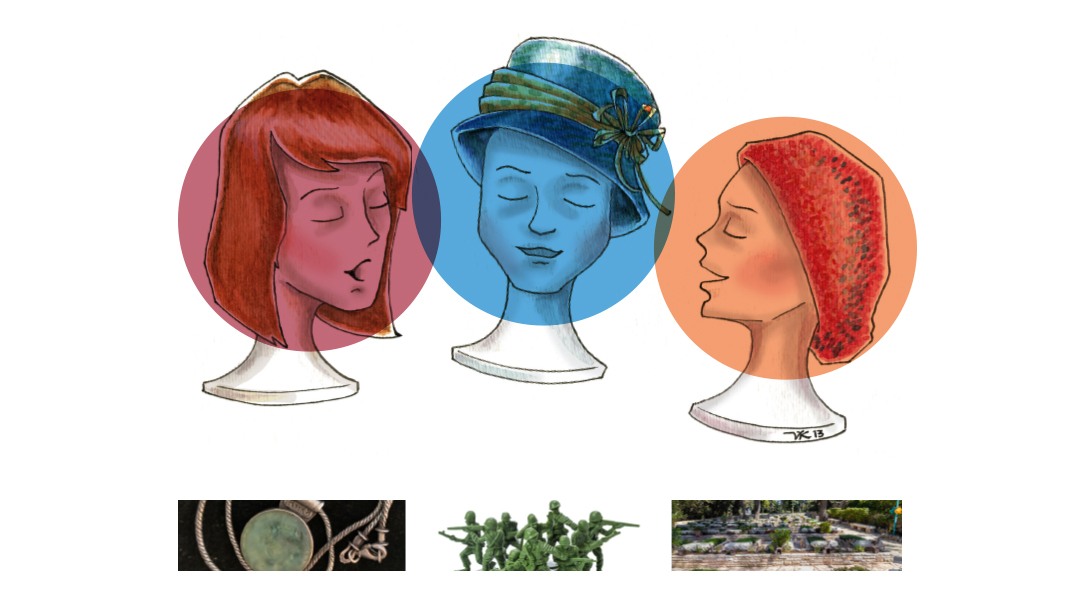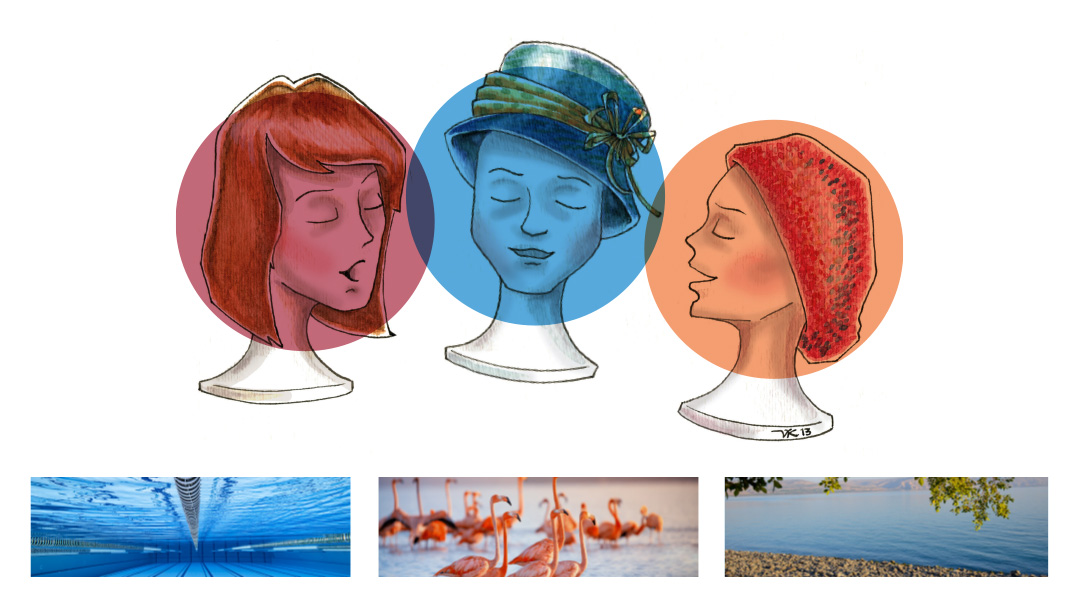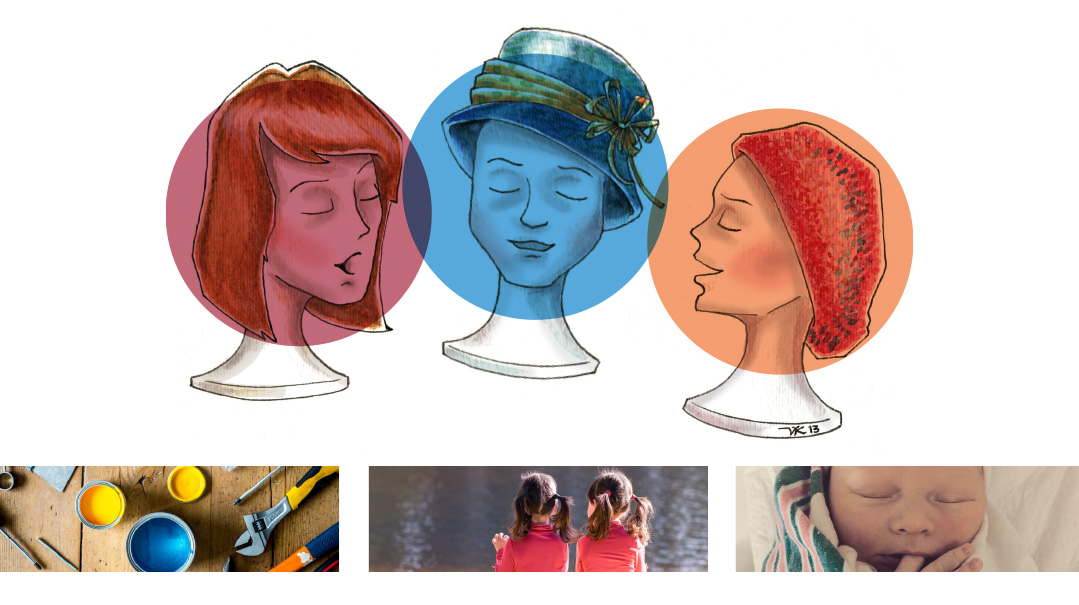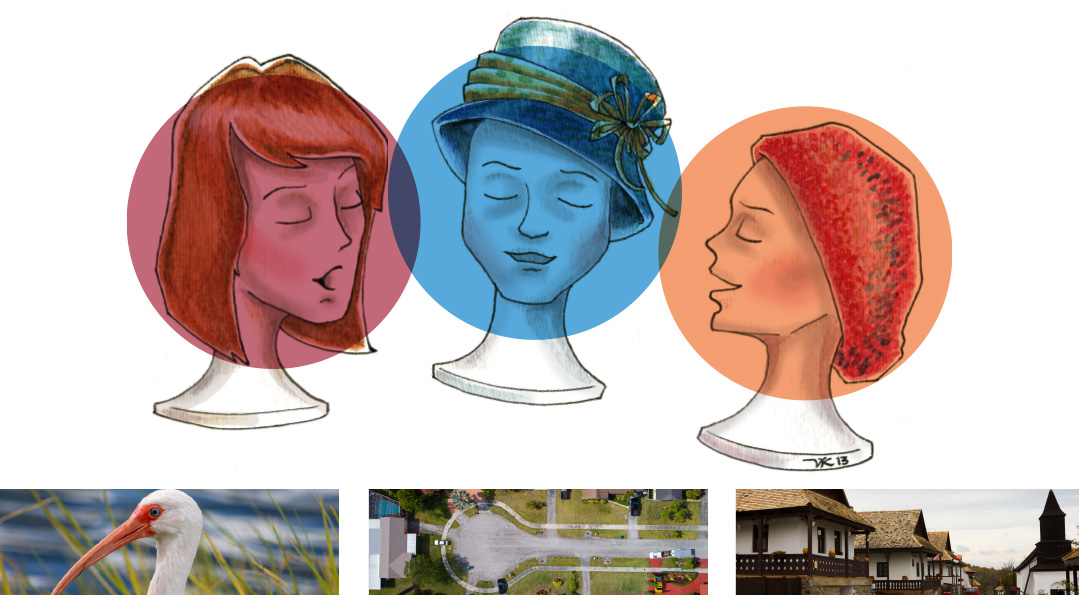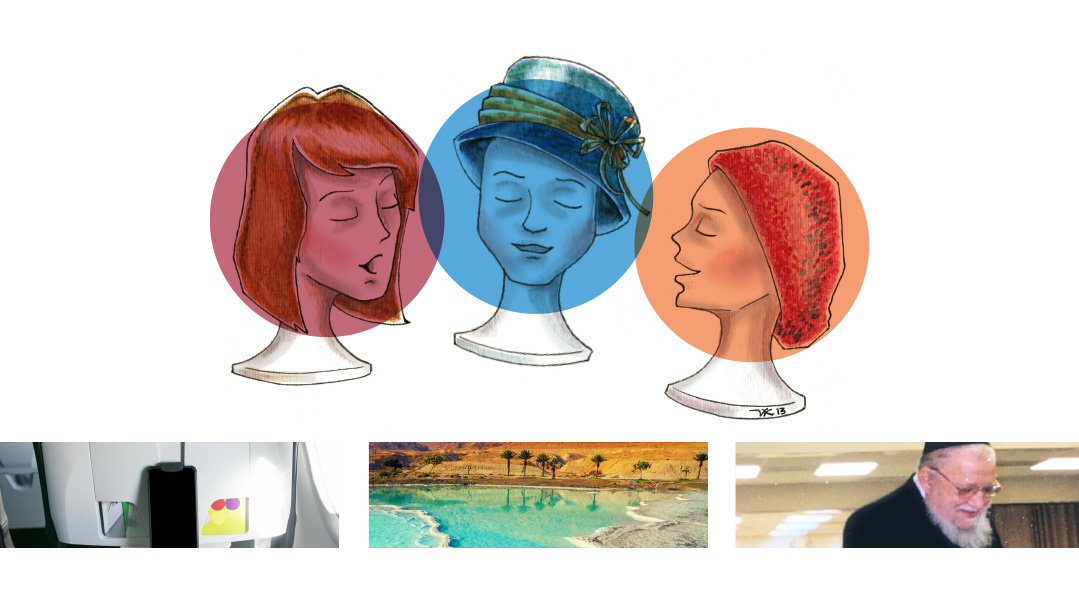Lovely As a Tree
| December 7, 2021The Sisters share stories grown on trees
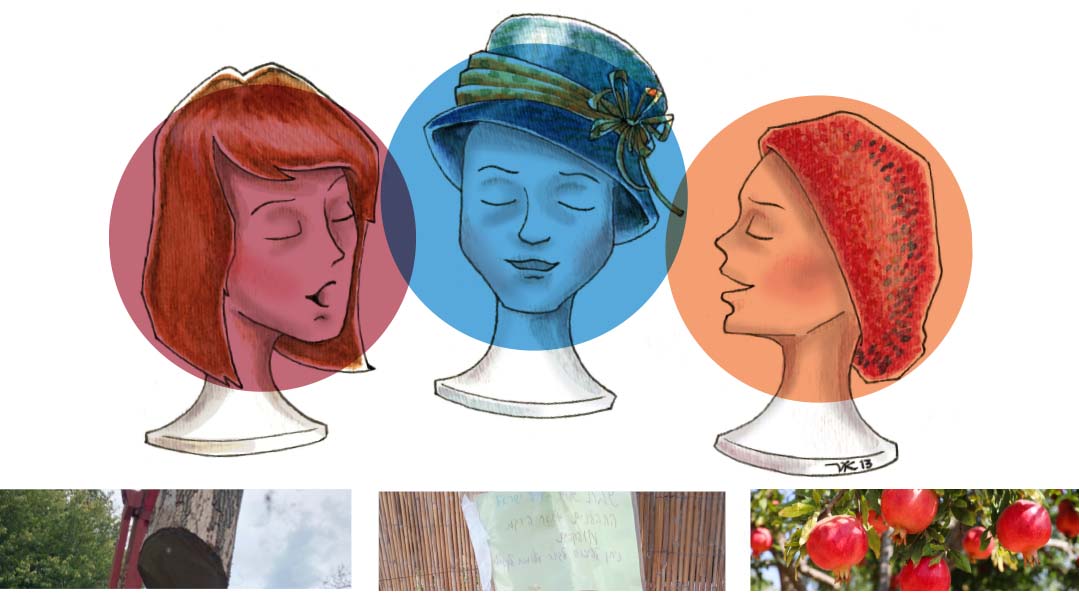
“I think that I shall never see
A poem lovely as a tree ...
Poems are made by fools like me
But only G-d can make a tree.”
Those are the first and final lines of “Trees,” one of the most admired poems of the 20th century. We Sisters have to agree with poet Joyce Kilmer. Not that poets are fools (though admittedly it’s not the most practical career path), but that Hashem’s trees are a miracle of creation. We sit in their shade on sunny days, take shelter under them in the rain. We climb their branches, enjoy their fruit, use their lumber. Trees clean the very air we breathe.
Trees are central to our physical world, while their beauty nourishes our souls. Which is why artists and poets have paid tribute to trees in pictures and words. And why we decided to dedicate our column to stories that grow on trees.
Or, to slightly change the opening line of “Trees”: We think that we shall never see / a Schmooze lovely as a tree…
Marcia’s tree and…
Sticks and Stones
The red oak beside my house soared proudly 120 feet into the sky. It took about 80 years to reach that height.
And now it was dead…
I confess. When my gardener delivered the bad news, my first reaction wasn’t grief about the poor old tree’s demise. Rather, it was fear about the danger to my house — and to me! My bedroom is on that side of the house. I had visions of a massive wooden-limbed monster crushing me in my sleep.
My fears were compounded by the fact that Hurricane Ida was headed toward our area, just days away. I visualized that meteorologists’ “cone” diagram with an arrow pointing dead center — to my house. My bed.
Stop the irrational fears, I told my overwhelmed brain. Instead, focus on practical concerns. How much will it cost to take it down? How do I find a good tree-removal service?
And how do I deal with yet another house issue alone — without Sheldon a”h?
Over 48 years of marriage, we’d developed clear lines of responsibilities. I did most of the cooking, shopping, and carpooling. He took out the trash, changed the light bulbs, handled the finances, dealt with home repairs. After he passed away, it all fell on my untested shoulders.
To make matters worse, for the past four months — specifically since the day I retired (yes, I finally did it) — I’d been besieged with an endless stream of household repairs. Dead small appliances, broken fleishig kitchen faucet, three separate boiler room pipe leaks, an ever-filling toilet, and on and on.
And major issues. Like my refrigerator dying just days before the Yomim Noraim. Having to find one that would fit my kitchen’s dimensions, have Sabbath mode to combat the digital tchachkes, and could be delivered ASAP. Having to deal with my dying food.
Did I mention my air conditioning? While waiting four months for an “evaporator coil drain pan,” on back-order because of Covid, I spent an entire morning each week waiting for a technician who’d climb into my attic to hand-pump water out of the system.
Wait, it gets worse: a basement bedroom flood. Shlepping everything out of the room, pulling up carpeting, hiring a contractor to replace flooring and redo drywall. And just when I got through with the basement — it’s raining upstairs, from around two skylights. You guessed it: my entire roof needed replacing.
And now the tree.
Dealing with house issues had become a full-time job. Good thing I’d retired. Or was Hashem just saving up these challenges for when I’d have time to deal with them?
While kvetching to a friend about my disintegrating house, I learned an important expression: Aytzim v’avanim. When Bnei Yisrael deserved to be destroyed, Hashem instead took out his anger on “wood and stones” and destroyed the Beis Hamikdash.
Aytzim v’avanim. My new mantra whenever anything broke.
Crescendo Day. The new refrigerator arrives in the morning. Then comes the a/c technician, armed with the replacement part. He’ll spend the morning schvitzing in the attic. Two flights below, a plumber replaces boiler room piping. Outside, I seal a deal with the third roofer to give me an estimate.
Then come the tree people.
A sight to behold. A dozen men plus assorted vehicles and equipment: buzz saws, a giant crane, a tractor with a huge claw in front to grab and transfer the big logs, a “chipper” for the smaller limbs and twigs, trucks for hauling the lumber, blowers for cleanup. A perfectly choreographed ballet of manpower and machine power working in unison.
Fascinated, I watch from a window as the once mighty tree is dismantled, piece by piece. Even the stump is removed — last trace of its existence.
I feel sad… yet strangely exhilarated. Three years ago, whooda thunk I’d have the koach and knowhow to deal with flooded basements, leaky pipes, broken appliances, and dead trees? Yet somehow, I’ve found the strength to do it all myself. And unlike the tree, I’m still going strong.
And the icing on the cake: with all the repairs, my old house is practically brand new!
Okay, I still need to get that faucet replaced. And I have a lightbulb to change. No sweat. Aytzim v’avanim.
Miriam celebrates…
Mustapha and the Tree and You and Me
This is a tale of shemittah. And sharing. And a dancing washing machine and a little pomegranate tree with a big message.
Not to mention the Kohein Gadol’s laundry.
It takes place 15 years ago. At the time, there was far less fanfare about shemittah than there is today. There were certainly no programs to allow landless city-dwellers to purchase a small plot in a field in order to take part in the mitzvah.
With, to the best of my knowledge, one exception — the Zakon/ Zitter Land-Sharing Program.
It was a lot less formal than it sounds (and, indeed, I just made up the name tonight). Just a few lines scribbled in pencil on a piece of paper. “I, Jay Zitter [Emmy Leah’s husband] give Nachman Zakon [my husband] the corner of my garden to plant a pomegranate tree and perform all the mitzvos ha’teluyos ba’aretz.”
Since we had no garden, backyard, or even space on our porch, this “contract” enabled Nachman to fulfill one of his dreams: to observe the many mitzvos connected to Eretz Yisrael.
Since that day, Nachman takes ma’aser off each rimon harvest. Every seventh year, he foregoes pruning and harvesting and puts up a sign announcing that the fruits are free for the picking. And, of course, at least once every shemittah year he goes out, looks fondly at his tree, and bids it “Good Shabbos.”
It was generous of Emmy Leah and Jay to share their backyard, which isn’t large. But when we proposed the idea, we knew they’d approve. After all, hadn’t we shared something not long before?
Hadn’t we shared Mustapha, the washing machine?
Now, most people don’t give their washing machines names, but this one was a bit different from your average Maytag. It had a backstory — literally, because its story began when it was carried on the back of a delivery guy named Mustapha, for whom we named it.
For one incredibly fun year, my identical twin sister Emmy Leah and I lived in the same Har Nof building: her family on the fifth floor, mine on the third. This arrangement was temporary, while we waited for our own homes to be built. These apartments were not fully furnished, and each was missing a washing machine. Neither of us wanted to invest in a new machine until we had our own homes. But we also couldn’t last a full year without one.
We came up with a creative (some might say crazy) solution: buy one cheap used washing machine — and share it!
One of the charming peculiarities of old Israeli washers was their tendency to dance — up and down, right and left — during the spin cycle. Quite a dancer was our Mustapha. One memorable night, Emmy Leah walked into the closed porch that Mustapha called home and saw a sight that still sets us laughing: The sponja stick had fallen onto the moving washing machine and the two of them — fat little Mustapha and the tall and thin stick — were doing the tango.
One night, I was trudging up the stairs with a pile of dirty laundry. On the fourth floor, I met Emmy Leah, coming down with a basket of my clean clothing. We looked at each other and (being identical not only in faces, but in quirky thought processes) burst out laughing.
We both recalled, at the same time, the famous story of two brothers bringing each other food in the middle of the night and meeting at the spot where the Beis Hamikdash would be built, a tribute to the love between them.
“And on this very spot, the fourth floor of Rechov Ruzhin 25,” we both said, giggling, “will be built the laundry for the Bigdei Kehunah!”
Okay, it was a joke, and maybe a silly one. But there’s a truth here. If we learn to share — our washing machines and gardens, our material and spiritual blessings, our words of comfort or laughter, whatever is needed — then perhaps, sooner than we can imagine, you’ll be bringing Nachman Hakohein the bikkurim from your very own rimon trees!
Emmy Leah strolls through…
Fall Foliage
A Tree Grows in Brooklyn. One of those books you may or may not have read, but you recognize the title. Maybe you joked about the one tree that grows in a city of eight million people. It gets a bit crowded when they all squash under it for shade on a sunny day.
Well, I grew in Brooklyn, too, in Boro Park, as the neighborhood became a center for frum Jews. And if there really was a tree growing there, honestly, I never noticed. I was busy watching new brick houses popping up on what seemed a daily basis, rejoicing in Jewish schools opening, and reveling in the kosher pizza shops, falafel joints, and delis moving into the neighborhood.
Who had time for trees?
That city-girl view changed drastically when I moved to upstate NY. Watching the fall foliage was the favorite local pastime. I got to know some trees personally: the maple down the block whose leaves for some reason turned red in late August, before all its fellow trees; the oak where we hung a swing — we’d laugh as brown and yellow leaves fell gently on the children’s heads as they swung.
And then there were Sunday family trips. We lived a short drive away from some of the most beautiful autumn parks in the country. We’d gaze, awestruck, at gorgeous gorges; the colors of the changing leaves rivaled Crayola’s most generous crayon boxes or an artist’s fullest palette. We’d run through meadows where the green grass set off the flaming reds, shining yellows, dusky browns of the surrounding forests.
The beauties of fall came and went quickly, followed by an endless cold and snowy winter. We’d exchange our rakes for snow shovels. But somehow the foliage of November made the snow-covered trees of December… and January… and February…. and March… more bearable.
That was long ago, decades before we made aliyah. On a November morning, just last week, I was worlds away from the fall foliage I’d enjoyed so many years before. It was a warm and sunny day, so I decided to skip the Jerusalem light-rail ride to work and walk down busy Rechov Herzl.
I didn’t feel sad, not exactly. Who could feel sad walking under the beautiful Yerushalayim blue sky? But somehow on that November morning, memories of the fall foliage I’d left behind intruded, and I felt a little — was it wistful? nostalgic? — surrounded by buildings and construction, hearing cars and trucks honking and trains clattering by. Where was the quiet November beauty of fall foliage?
Then I saw it. A narrow simtah, a passageway between houses. The bit of green between the white stone walls of the buildings beckoned me. Israel actually does have trees that change color — but up in the Golan, not generally in Jerusalem courtyards. Still, maybe I’d see something growing that would remind me of those glorious fall foliage days.
I did.
Not trees. Not colors. Not gorges, not meadows.
A piece of paper.
I saw a piece of paper.
It hung loosely on the bamboo fence surrounding a tiny Yerushalayim garden, stuck in a transparent plastic sleeve.
The handwritten message began, “Shabbat Shalom, Eretz Yisrael!” and went on to invite anyone to enter the garden to pick the herbs that grew freely there.
Shemittah!
I actually didn’t go into the garden. Awkward to walk into my office with pockets full of homegrown parsley and coriander, and in any case, dealing with hefker shemittah produce is quite complex.
I returned to Rechov Herzl without any herbs — but also without that slight melancholy I’d felt, remembering the beauties of the fall foliage I’d left behind.
Hashem has spread His gift of beautiful physical scenery throughout His world, and I cherish the memories of those glorious November landscapes. But my little detour between buildings on a busy road in Yerushalayim reminded me of the glorious spiritual landscapes of Eretz Yisrael.
Yes, a tree, possibly even more than one, can grow in Brooklyn, and groves of breathtaking foliage can certainly flourish in upstate New York.
But only in Israel does a simple herb… or flower… or tree… keep Shabbos.
Shabbat Shalom, Eretz Yisrael!
(Originally featured in Family First, Issue 771)
Oops! We could not locate your form.
